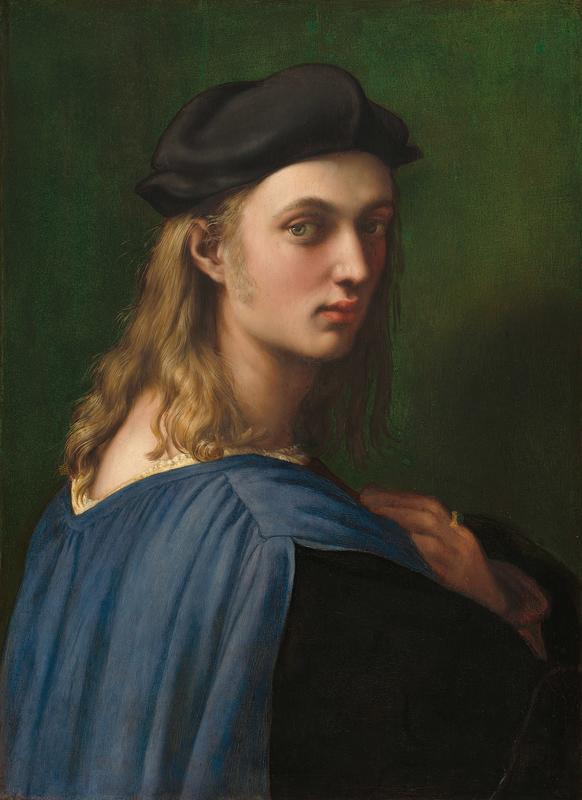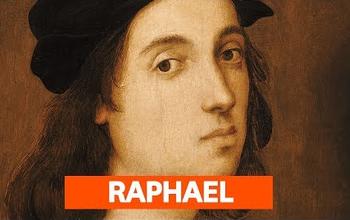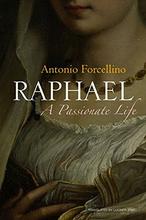More about Bindo Altoviti
- All
- Info
- Video
- Shop

Contributor
Let’s get this straight: pretty boy banker Bindo Altoviti and Renaissance painter Raphael were not the same person.
The distinction may seem like a no-brainer. Altoviti’s baby blues and flowing blonde locks easily distinguish him from the artist’s brown-eyed self portraits— contacts hadn’t quite caught on in 1515. Yet despite obvious differences in appearance, Altoviti’s visage was misidentified as Raphael’s for over two centuries. Historians have since dispelled the myths, but it’s amusing to imagine Raphael securing a bottle of 16th century bleach before painting his own likeness.
Bindo’s good looks, combined with a prestigious banking career, made him a celebrity in Rome. The comely young socialite also made his mark on the arts, establishing friendships with big names like Michelangelo and Benvenuto Cellini, an Italian sculptor and jack-of-all-trades. Talent notwithstanding, Cellini made a less-than-trustworthy companion— in an eerily blasé autobiography he would recount his life in threats, stabbings, and murders.
Like Cellini, Michelangelo stood out from Altoviti’s star-studded social circle. Like any steadfast bosom buddy, he shared Bindo’s enemies, in particular the opulent Agostino Chigi. Chigi may have lacked Bindo’s luscious locks, but his wealth was limitless. To demonstrate his affluence, he served dinner guests on silver dishes and then threw the plates to the river below. Naturally, servants hid by the banks to bring the goods home. No wonder Bindo couldn’t stand him— Chigi was the Draco Malfoy of the Renaissance.
Portrait of Bindo Altoviti’s reputation has suffered many a critical blow. Some have declared the work too frigid and technically deficient to match Raphael’s other masterpieces, suggesting that it has been misattributed. 19th century critic Morelli went so far as to implicate Altoviti’s ear in his appraisal, believing its shape to be suspiciously uncharacteristic of Raphael. Other critics, however, praise the portrait for coloring even Titian would envy. After all, the king of Bavaria paid a heavy price for this tableau back in 1808. If it’s good enough for royalty, it’s good enough for us.
Sources
- Passavant, Johann David. Raphael of Urbino and His Father Giovanni Santi. Macmillan and Company, 1872.
- “Bindo Altoviti.” Wikipedia. January 6, 2018. Accessed February 27, 2018. https://en.wikipedia.org/wiki/Bindo_Altoviti.
- “Benvenuto Cellini.” Wikipedia. February 21, 2018. Accessed February 28, 2018. https://en.wikipedia.org/wiki/Benvenuto_Cellini.
- “Agostino Chigi.” Wikipedia. February 27, 2016. Accessed February 27, 2018, https://en.wikipedia.org/wiki/Agostino_Chigi.
- “Raphael and the Beautiful Banker.” Yale University Press. Accessed February 27, 2018. https://yalebooks.yale.edu/book/9780300108248/raphael-and-beautiful-ban….
- “Bindo Altoviti.” National Gallery of Art. 2017. Accessed February 27, 2018. https://www.nga.gov/collection/art-object-page.12131.html.
- Duppa, Richard. The Lives and Works of Michael Angelo and Raphael. London: G. Bell and Sons, 1872.
Featured Content
Here is what Wikipedia says about Portrait of Bindo Altoviti
The Portrait of Bindo Altoviti is a painting finished around 1515 by the Italian High Renaissance painter Raphael. It is housed in the National Gallery of Art of Washington, D.C., United States.
Bindo Altoviti was a rich banker born in Rome in 1491 of Florentine origin. He was a cultured man who liked the arts.
The graceful, almost effeminate position of the subject along with the heavy contrast between light and shadow are atypical of Raphael's work, particularly of his portraits of men, demonstrating the artist's experimentation with different styles and forms in his later Roman period. The influence of the works of Leonardo, which Raphael studied astutely during this period of his career, is strikingly evident in this particular piece.
The painting was a property of Altoviti's descendants until 1808, when it was sold to Ludwig I of Bavaria. It remained at the Alte Pinakothek until 1936, when, after many debates about its attribution, the painting was lured out of Nazi Germany by "canny English dealers". Acquired by Samuel Henry Kress, the portrait subsequently became property of the National Gallery of Art in Washington, D.C..
A bronze bust of Altoviti by Benvenuto Cellini is exhibited in Boston at the Isabella Stewart Gardner Museum.
Check out the full Wikipedia article about Portrait of Bindo Altoviti














